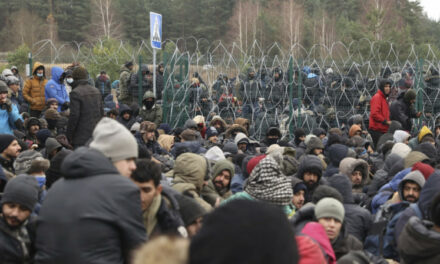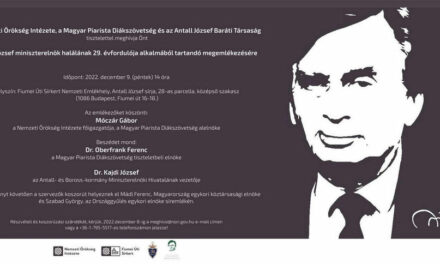The Christmas holiday cycle lasts from the first day of Advent until Epiphany. The significant days of this period begin with December 4, Borbála . Saint Barbara was executed for his Christian faith. He is the patron saint of miners, castles, gunners, patron of unmarried girls. Women's work bans are typical for this day. It was believed that this is when the witches acquire the clothes needed for spoiling, so it was forbidden to leave the clothes outside. Just as it was forbidden to give or lend as a gift, because that would take away the luck. The recommended work, however, is winemaking. If a branch of fruit soaked in water on the day of the Barball blossomed for Christmas, then, according to folklore, it indicated that the girl was getting married. On the fourth of December, Santa comes two days later.
Saint Nicholas IV. He lived in the city of Myra in the 19th century. He was famous for his charity. He was revered as the patron saint of citizens, students, millers, fishermen, merchants, bakers, and ferrymen.
Saint Luke was martyred for his faith. According to folklore, he is the protector of penitent street children, seamstresses, and people suffering from eye diseases. In many countries, they celebrated this day by eating a cake with a cult purpose. Here, they made witch-hunting chairs, made of nine types of wood. The chair had to be started on this day and finished by Christmas. On Luca's day, the landlady put a handful of wheat on a plate, watered it, and from the condition of the wheat on Christmas Eve, they deduced the next year's harvest. The next day we celebrate St. Otília, the patron saint of the blind and blind, and on the 21st we celebrate St. Thomas. If fresh snow fell in the morning, we hoped for a happy and peaceful Christmas.
December 24: Adam and Eve, i.e. the last day of the Advent period. Many beliefs are associated with this day: it was forbidden to weave, wash, patch, wash dishes, lend money, because this could all bring trouble to the family.
We put up a Christmas tree on this day. The next day is the day of the birth of Jesus Christ, and indirectly the holiday of family and love.
The holy period of birth ended with the ringing of the bell at the end of the midnight mass.
December 26 is St. Stephen's Day, the harvest wizard's day. If the trees are bruised and the sun is shining, it is believed that a good harvest of acorns is expected.
In connection with Christmas, it should be mentioned: one of the lovely folk customs of the Hungarians is nativity scenes, which can be traced back to ancient times, even to the feasts of the pagan age that we brought with us from Levédia. Our ancestors held a fertility rite on the winter solstice. After the spread of Christianity, all of this was integrated into the Christmas celebration.
Who were the rockers? Professional singers who went from house to house saying greetings, who not only visited the royal and aristocratic mansions, but also knocked on the homes of ordinary people.
They didn't have a good reputation because of their funny, sometimes mischievous rhyming lyrics, but all doors were opened for them. In 1552, for example, Gáspár Heltai wrote: " On the day of the birth of our Lord, Jesus Christ, comes the great feast of the devil, the morning week. There is no end to the many drinks and the many breakfasts . Then, however, this custom came to an end, since all this was only in the XVII-XVIII. It lasted until the 19th century, when it was definitively replaced by nativity scenes.
The custom of regölé was preserved only in the border valley of the country, in the Székelyföld. In some villages of Udvarhelyszék in the XIX. even in the 19th century, groups of regős people gathered in bands of four and shook their chained sticks making a lot of noise, and with the bagpipes, flutes and regős-whistles they brought to life ancient melodies that have been forgotten almost everywhere. " Let's sing, let's sing a blessing to the master of this house !" - they sang while wishing for a bountiful harvest. The text of another song has also survived, which certainly refers to the pagan-age prodigy-deer saying: " On my forehead is a bright sun that nestles wealth." Wealth on my side Árdél beautiful moon. My right kidney has the stars in the sky ”. But from Transylvania, namely from Csík county, and from the Csángó region of Hétfalus, the text of one of our oldest Nativity carols from 1750 also comes, which proves that these two folk customs coexisted nicely for a while. Nativity sceners visited the villages right before Christmas and presented the story of Jesus' birth accompanied by some snacks and toast.
In the Middle Ages, people could still see the Holy Family looking for accommodation, the worship of the shepherds, and the visit of the Three Kings in the churches, but later this custom was pushed out of there, and the men, who were still strictly adults at the time, held the performance in people's homes. Only the stable in Bethlehem and a scaled-down replica of the Holy Family could remain between the consecrated walls.
Two types of nativity scenes then developed: in Transdanubia and the Upper Tisza region, the Christmas story was played with puppets, and in Transylvania and the central part of the country, the Christmas story was played with live actors. Finally, the latter spread throughout the entire accommodation area of the Carpathian basin of Hungarians.
Author: Ákos Jezsó / hirado.hu
Cover image: Nativity in Kiskunfélegyháza / MTI Photo: Sándor Ujvári












